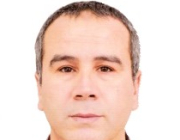Citation:
Abstract:
This chapter covers a numerical method for the resolution of the problem of subcooled convective boiling flows in microchannels heat sink. The focus is on the numerical procedure for tracking or capturing interface/surface shape. Fundamentals of the boiling phenomena and the thermophysical properties with dimensionless numbers usually used in the resolution of the two-phase flow problems are presented in Chapter 18. In particular, an analysis of the transition of phase change pattern between conventional macrochannels and mini/microchannels is given in that chapter. Since the focus of this chapter is the numerical modeling rather than the fundamentals of the boiling process, analysis and interpretation are limited to the concerned subject. Analysis of some experimental research works in the literature is also given in Chapter 18. For an in-depth understanding of fundamentals and analysis of convective boiling heat transfer in microscale, readers are referred to different excellent sources available in the literature. One can quote Refs. [1–13] among a long list of interesting studies.
Mini- and microchannel heat sinks have become known as one of the effective cooling techniques. The advantage of such devices is their ability to dissipate large heat flux in relatively small volumes, which makes them very efficient cooling systems. Mini- and microchannel heat sinks combine the attributes of very high surface-area-to-volume ratio, large convective heat transfer coefficient (even in single-phase flows), and small coolant fluid quantity. These attributes make mini/microchannels heat sinks very suitable for cooling devices with high dissipating energy like integrated circuits, microprocessors, and high-energy laser mirrors.
